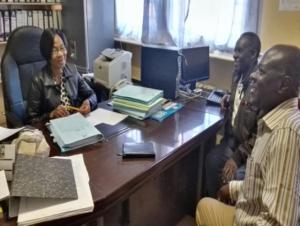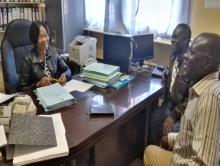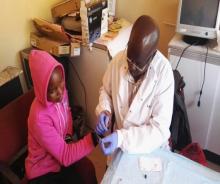Botswana On the Search Mode for Lymphatic Filariasis (LF) in the Country
8 July 2016 - The Botswana Ministry of Health continues the fight against Neglected Tropical Diseases (NTDs). The active search for Lymphatic Filariasis (LF) was conducted across 10 villages (11 schools) in the Chobe district commencing from the 23rd June to 30th June 2016. In 2015, LF mapping was conducted in 6 districts (Chobe, Ngami, Okavango, Tutume, North West, and Bobonong) bordering Zambia and Zimbabwe where the disease is known to be endemic. Out of these districts LF was found only in Chobe at a prevalence of 1%.
According to WHO guidelines any district with 1% prevalence and above must be subjected to annual mass drug administration for at least 5 years to achieve elimination. It is however vital that this 1% borderline endemicity must be confirmed through a re-mapping process in which children were screened to determine transmission in the area. It is in this view that the WHO Regional Program Review Group (RPRG) on NTDs recommended a validation of Lymphatic Filariasis prevalence in Chobe.
The mapping exercise began with a joint Child Health deworming and LF re-mapping comprehensive community and schools mobilization/sensitization campaigns across 10 villages in the district. This was done through Kgotla Pitso (traditional community consultation gatherings), council meetings and school visits to obtain buy-in and ownership of the activity.
Following this, two field teams, both previously involved in the last mapping; each comprising of a data clerk, laboratory technician, nurse, and a supervisor were given refresher training on the survey methodology to ensure standardization and quality of the tests to be used. The field work involved a more rigorous methodology which entailed surveying all schools in the district and testing at least 30 children aged 9- 14 in each.
Every child provided a few drops of blood from a finger-prick which was tested using rapid test producing results in 10 minutes. For results that came out positive, samples would be sent to a WHO recognized reference laboratory for further confirmatory DNA tests. Data collected was relayed through real-time reporting system after which it will be cleaned, verified and analyzed. A detailed report will be produced and disseminated to MOH management, Chobe District Health Management Team (DHMT), Ministry of Education, the community at large and other stakeholders. For quality assurance purposes all the fieldwork was supervised by consultants supported by WHO.
___________________________
01 Left to Right: School Head, Ms Moje (Kasane P. School) Mr Tembo (Lab) and Dr J. Mwansa (consultant) during school visit
02 A laboratory technician obtaining blood drop from a school child
03 A Laboratory technician fixing blood drop on an ICT card
04 Another child submits a blood drop







